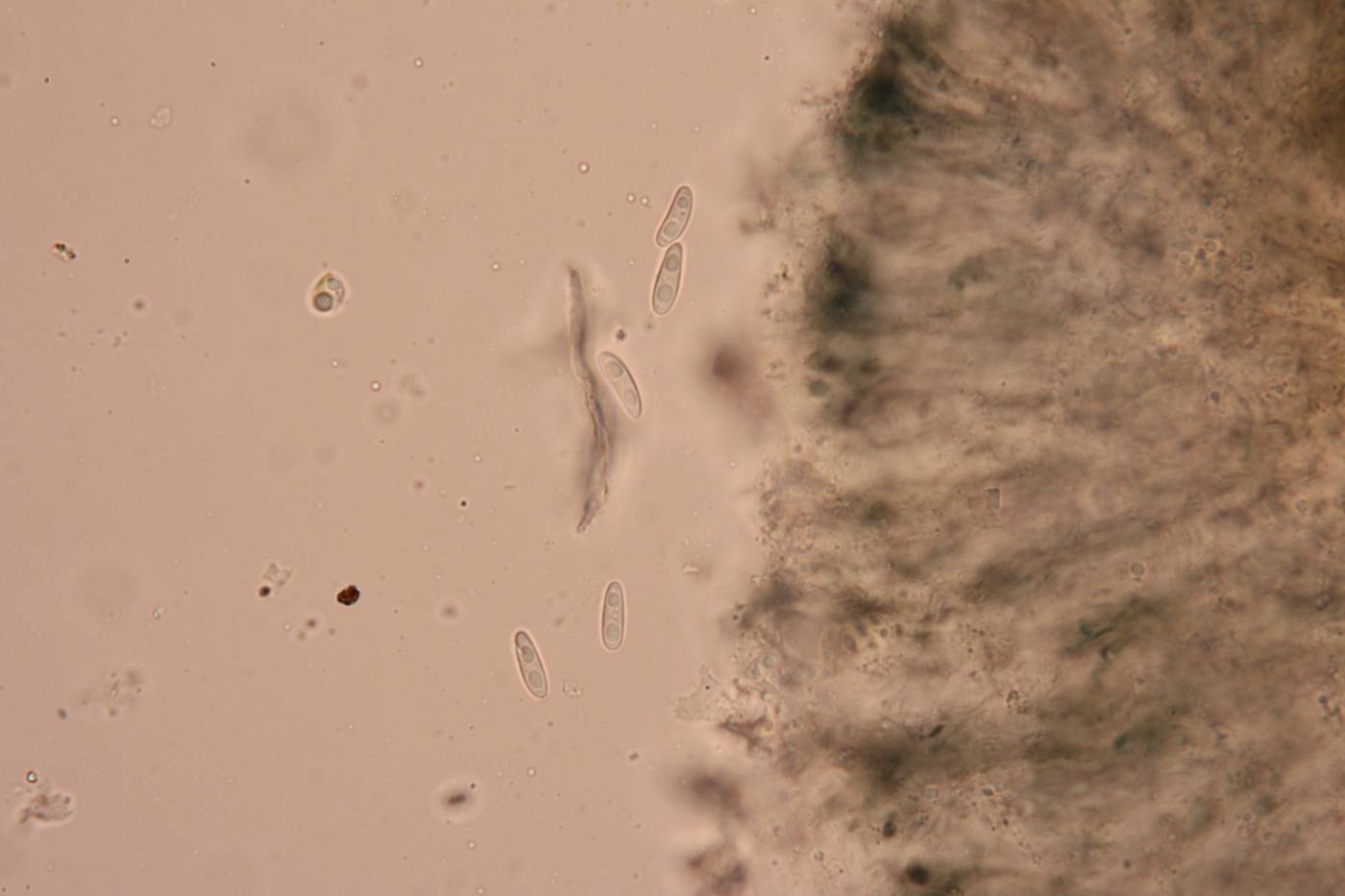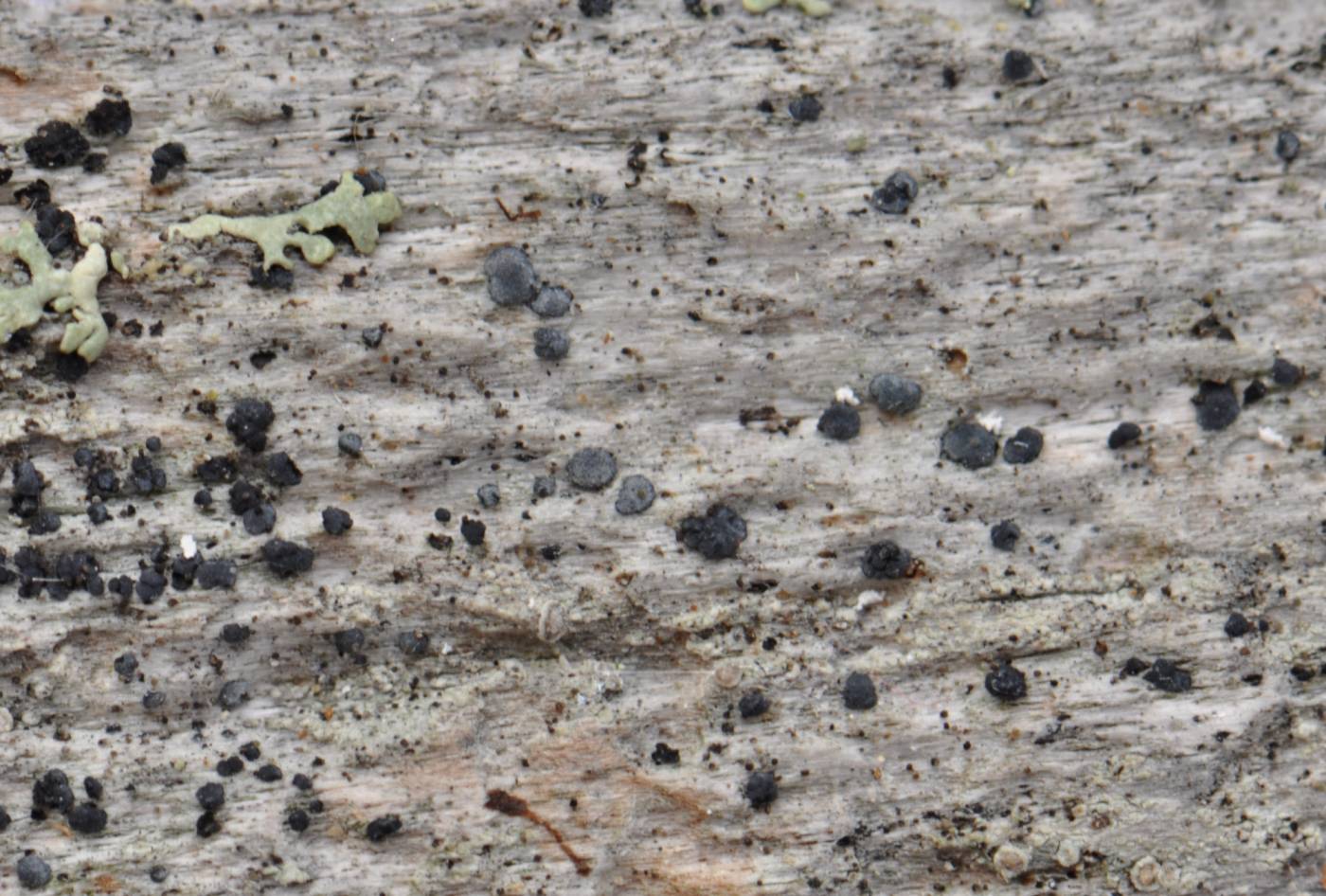A well-recognisable species thanks to its dark, usually convex, often blue-pruinose apothecia. The content of placodiolic acid in the thallus is a diagnostic trait. Owing to the vanishing margin, epruinose forms may resemble members of the genus Micarea, which, however, have a different symbiotic partner – the so-called micareoid alga. A conspicuous green-blue pigment as well as the in KOH soluble granules in the epihymenium and exciple are visible in sections. The closely related L. leprarioides differs markedly in the sorediate thallus which, however, occasionally may be immersed. The darker forms of Lecanora sarcopidoides may also appear similar. Nevertheless, both the mentioned taxa may be distinguished from L. turgida chemically, since they contain pseudoplacodiolic acid as their main metabolite. Lecidea turgidula is a characteristic element of northern boreal forests. In the Czech Republic, it usually grows on hard wood of conifers, especially snags and stumps, in both natural and managed forests, less often it may be found also on a tree bark. The lichen has a similar distribution as its closely related L. leprarioides. Its Czech localities are restricted to higher border mountains with the highest concentration in the Šumava Mts.
Literature: Tønsberg T. (1992): The sorediate and isidiate, corticolous, crustose lichens in Norway. – Sommerfeltia 14: 1–331.
taxonomic classification:Ascomycota → Lecanoromycetes → Lecanorales → Lecideaceae → Lecidea
Red List (Liška & Palice 2010):VU – vulnerable
Red List (Malíček 2023):C3 – endangered
Occurrence in the Czech Republic
All records: 33, confirmed 32. One click on a selected square displays particular record(s), including their source(s).


